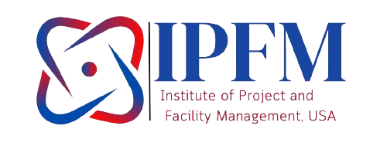CERTIFIED REGISTERED OIL AND GAS PROJECT MANAGER (CROGPM)
About the Course
The course objectives for a Certified Registered Oil and Gas Project Manager (CROGPM) program are designed to provide participants with the specialized knowledge and skills needed to effectively manage projects within the oil and gas industry. These objectives aim to prepare individuals to navigate the unique challenges and intricacies of overseeing projects in the oil and gas sector, ensuring successful project delivery while adhering to industry standards and regulations.
Course Content
1. How to Manage Oil and Gas Projects
-
1.1 The Principal of Project Management
-
1.2 Project Characteristics
-
1.3 Project Life Cycle
-
1.3.1 Initiation of the Project
-
1.3.1.1 Getting to the Scope Baseline
-
1.3.2 Feasibility Study
-
1.3.3 FEED (Preliminary) Engineering
-
1.3.4 Detail Engineering
-
1.3.5 Decision Support Package
-
1.3.6 Design Management
-
1.3.7 Execution Phase
-
1.3.8 Commissioning and Startup
-
1.4 Is this Project Successful?
-
1.4.1 Project Management Goals
-
1.4.1.1 Project Integration Management
-
1.4.1.2 Project Scope Management
-
1.4.1.3 Project Time Management
-
1.4.1.4 Project Cost Management
-
1.4.1.5 Project Quality Management
-
1.4.1.6 Project Human Resource Management
-
1.4.1.7 Project Communications Management
-
1.4.1.8 Project Risk Management
-
1.4.1.9 Project Procurement Management
-
1.5 Project Management Tasks
-
1.5.1 Define the Project Target
-
1.5.2 Define the Scope of Work
-
1.5.3 Define the Time Frame
-
1.5.4 Define the Available Resources
-
1.5.5 Define the Cost
-
1.5.6 Evaluate the Master Plan
-
1.5.7 Accept the Master Plan
-
1.5.8 Schedule Follow Up
-
1.5.9 Cost Follow Up
-
1.5.10 Comparing Between Actual Work and Master Plan Cost
-
1.5.11 Performance Evaluation
-
1.6 Project Manager Skill
-
2. Project Economic Analysis
- 2.1 Introduction
- 2.2 Project Cash Flow
- 2.2.1 Depreciation Methods
- 2.2.1.1 Straight-Line Method
- 2.2.1.2 Declining-Balance Method
- 2.2.1.3 Sum-of-the-Year-Digits
- 2.2.1.4 Sinking-Fund Method
- 2.2.1.5 Service-Out Method
- 2.2.2 Method of Net Present Value (NPV)
- 2.2.2.1 Inflation Rate
- 2.2.3 Minimum Internal Rate of Return (MIRR)
- 2.2.4 Payout Method
- 2.3 Economic Risk Assessment
- 2.3.1 Probability Theory
- 2.3.2 Probability Distribution of Variables
- 2.3.2.1 Normal Distribution
- 2.3.2.2 Log Normal Distribution
- 2.3.2.3 Binominal Distribution
- 2.3.2.4 Poisson Distribution
- 2.3.2.5 Exponential Distribution
- 2.3.2.6 Weibull Distribution (Rayleigh Distribution)
- 2.3.2.7 Gamma Distribution
- 2.3.2.8 Logistic Distribution
- 2.3.2.9 Extreme Value (Gumbel Distribution)
- 2.3.2.10 Pareto Distribution
- 2.3.3 Distribution for Uncertainty Parameters
- 2.3.3.1 Triangular Distribution
- 2.3.3.2 Uniform Distribution
-
2.3.4 Choose the Appropriate Probability Distribution
- 2.3.4.1 Chai Square Method
- 2.3.4.2 Kolmograv-Smirnov (K-S)
- 2.4 Decision Tree
- 2.5 Monte-Carlo Simulation Technique
- 2.6 Risk Adjusted Value (RAV)
3 Pitfalls in Time Schedule Planning
-
3.1 Introduction
-
3.1.1 Plan Single Point of Accountability (SPA)
-
3.1.2 Starting the Plan
-
3.1.3 Work Breakdown Structure (WBS)
-
3.2 Responsibilities of the Team
-
3.3 Expected Activity Time Period
-
3.4 Calculate the Activity Time Period
-
3.5 Time Schedule Preparation
-
3.5.1 Gantt Chart
-
3.5.2 Arrow Diagram Method (ADM)
-
3.5.3 Precedence Diagram Method (PDM)
-
3.5.4 Critical Path Method (CPM)
-
3.5.5 Program Evaluation and Review Technique (PERT)
-
3.5.6 Example
-
3.5.7 Application of the PERT Method
-
3.5.7.1 Statistics Calculation for Activity Time
-
3.5.7.2 Example
-
3.5.7.3 Time schedule control
-
3.6 Planning Overview
4. Project Cost Control
-
4.1 Introduction
-
4.2 Cost Types
-
4.2.1 Cost Estimate
-
4.2.1.1 Top-Down Estimates
-
4.2.1.2 Bottom-Up Estimates
-
4.2.1.3 Analogous Estimates
-
4.2.1.4 Parametric Estimates
-
4.2.2 Steel Structure Cost Estimate
-
4.2.3 Detailed Cost
-
4.2.4 Cost Estimate to Project Control
-
4.3 Economic Analysis to Project Cost
-
4.3.1 Work Breakdown Structure (WBS)
-
4.3.2 Organization Breakdown Structure (OBS)
-
4.3.3 OBS/WBS Matrix
-
4.3.4 Work Packages
-
4.3.5 Cost Control
-
4.3.6 (S) Curve
-
4.3.7 Engineering Cost Control
-
4.4 Cash Flow Calculation
-
4.4.1 Project Cash Flow
-
4.4.2 Impact on Increasing Cost
-
4.4.3 Project Late Impact
-
4.4.4 Impact of Operation Efficiency
5. Resource Hiring
-
5.1 Introduction
-
5.2 Project Organization
-
5.2.1 Types of Organizations
-
5.2.1.1 Project Organization as a Part of the Company
-
5.2.1.2 Separate Project Organization
-
5.2.1.3 Matrix Organization
-
5.2.2 Selecting the Best Organization
-
5.3 Roles and Responsibilities of the Project Manager
-
5.3.1 Project Manager as a Leader
-
5.4 Administrative Organization for Total Quality Management
-
5.5 Team Member Selection
-
5.6 Managing the Team
-
5.7 Allocate Resources to Project Plan
-
5.7.1 Example
-
5.8 Relation Between Project Parties
-
5.9 Document and Information Transfer
-
5.10 Information Transfer
-
5.11 Quality Control in the Design Phase
-
5.11.1 Inputs and Outputs of the Design Phase
-
5.11.2 Design Verification
-
5.11.3 Change in the Design
-
5.11.4 Approval of the Design
6. Tendering, Bidding, and Contract Traps
-
6.1 Introduction
-
6.2 Contracts
-
6.2.1 Measured Contract
-
6.2.2 Lump Sum
-
6.2.3 Cost Plus
-
6.3 Contract Between the Owner and Engineering Office
-
6.4 The Importance of Contracts in Assuring the Quality of the Project
-
6.5 Contracts in ISO
-
6.6 FIDIC Contracts
-
6.7 General Conditions in the Contracts
-
6.8 Arbitration and the Arbitrator
-
6.9 Bids and Tenders
-
6.9.1 Public (Open) Tender
-
6.9.2 Limited Tender
-
6.9.3 Negotiated Tender
-
6.9.4 Direct Order
-
6.9.5 Tender Technical Evaluation
-
6.9.6 Commercial Evaluation
-
6.9.6.1 Commercial Evaluation Methods
-
6.10 Closeout Report
7. New Approach in Managing Oil and Gas Projects
- 7.1 Introduction
- 7.2 Quality System
- 7.3 ISO 9000
- 7.4 Quality Management Requirements
- 7.4.1 Quality Manual
- 7.4.2 Quality Plan
- 7.4.3 Quality Control
- 7.4.3.1 Why is Quality Control Important?
- 7.4.3.2 Submittal Data
- 7.4.3.3 How to Check Incoming Materials
- 7.4.3.4 Methods of Laying Out and Checking Work
- 7.4.3.5 Material/Equipment Compliance Tests
- 7.4.3.6 When to Inspect Work
- 7.4.3.7 Paperwork/Documentation
- 7.4.3.8 Quality Control Plans
- 7.4.4 Quality Assurance
- 7.4.4.1 Quality Assurance in the ISO
- 7.4.4.2 The Responsibility of the Contractor (Manufacturer)
- 7.4.4.3 Responsibility of the Owner
- 7.5 Project Quality Control in Various Stages
- 7.5.1 Feasibility Study Stage
- 7.5.2 Feed (Preliminary) Engineering
- 7.5.3 Detailed Engineering Study
- 7.5.3.1 Design Quality Control
- 7.5.4 Execution Phase
- 7.5.4.1 ISO and Control Work
- 7.5.4.2 Inspection Procedures
- 7.5.4.3 Importance of Contracts in Assuring the Project Quality
- 7.5.4.4 Checklists
- 7.6 Operational Phase of the Project
- 7.7 Total Building Commissioning System
- 7.7.1 Planning Stage
- 7.7.1.1 Identify Commissioning Team
- 7.7.1.2 Define Owner’s Project Requirements with the Customer Agency
- 7.7.1.3 Develop Preliminary Commissioning Plan
- 7.7.1.4 Commissioning for Certifications (LEED, Energy Star, etc.)
- 7.7.1.5 Commissioning Agent Costs
- 7.7.1.6 Cost-Benefit Analysis for Commissioning
- 7.7.2 Design Stage
- 7.7.2.1 Incorporate Commissioning into A/E and CM Scope of Services
- 7.7.3 Construction Stage
- 7.7.3.1 Review Submittals for Performance Parameters
- 7.7.3.2 Develop and Utilize Construction Checklists
- 7.7.3.3 Oversee and Document Functional Performance Testing
- 7.7.3.4 Test Data Records
- 7.7.3.5 Hold Commissioning Team Meetings and Report Progress
- 7.7.3.6 Conduct Owner Training
- 7.7.3.7 Turnover Commissioning Record
- 7.7.4 Building Commissioning Process Post-Construction Stage
- 7.7.4.1 Post-Construction Stage
- 7.7.4.2 Perform Deferred and Seasonal Testing
- 7.7.4.3 Re-inspect/Review Performance Before End of Warranty Period
- 7.7.4.4 Complete Final Commissioning Report
- 7.7.4.5 Recommission Facility Every 3–5 Years
- 7.7.4.6 Recommissioning
-
7.7.5 Advantages for Total Building Commissioning System
8 Practical Risk Management for Oil and Gas Projects
- 8.1 Introduction
- 8.1.1 The Risk Management Process
- 8.2 Project Risks
- 8.3 Risk Assessment
- 8.4 Risk Identification
- 8.4.1 Methods of Defining Risk
- 8.4.1.1 Brainstorming
- 8.4.1.2 Delphi Technique
- 8.4.1.3 Nominal Group Technique
- 8.4.1.4 Crawford Slip
- 8.4.1.5 Expert Interviews
- 8.4.1.6 Root Cause Identification
- 8.4.1.7 Checklists
- 8.4.1.8 Documentation Reviews
- 8.4.2 Grouping the Risks
- 8.5 Define Priorities
- 8.5.1 Matrix Method
- 8.5.2 Tabulated Method
- 8.6 Risk Response Planning and Strategies
- 8.7 Risk Monitoring and Control
- 8.8 Example
- 8.9 Operations risk
- 8.10 Methods of Risk Avoidance
Programme Duration: 35 Contact Hours
Programme Fee: $1500
(Note: The fee varies based on Country)

